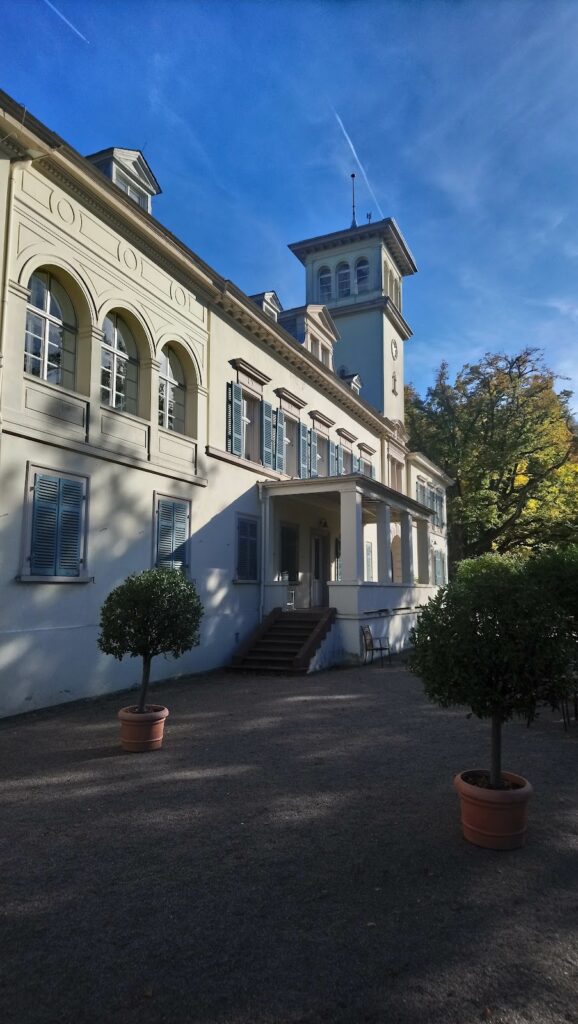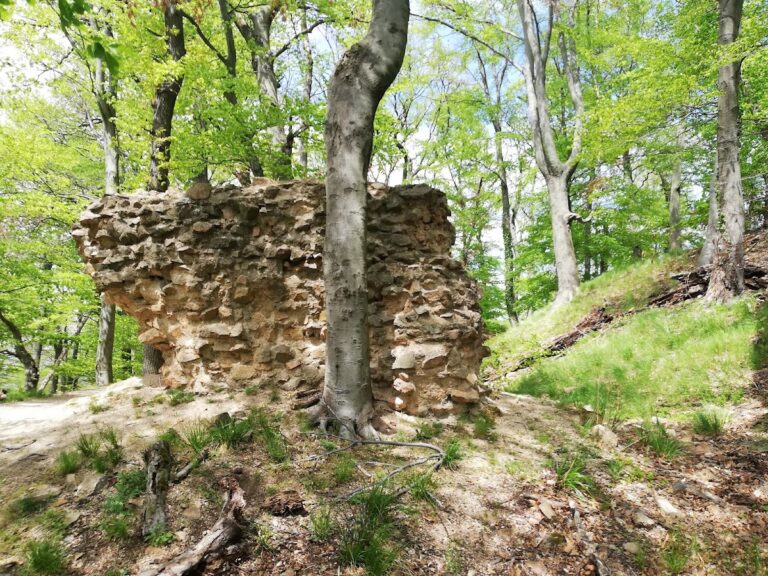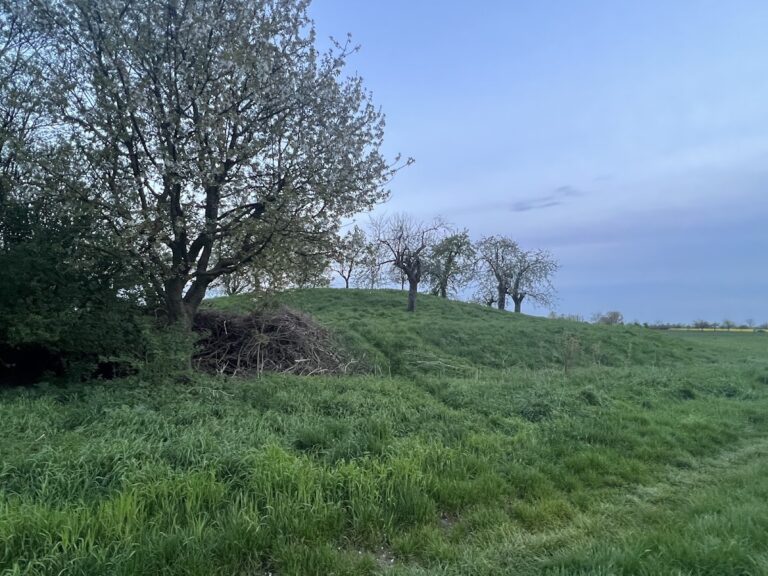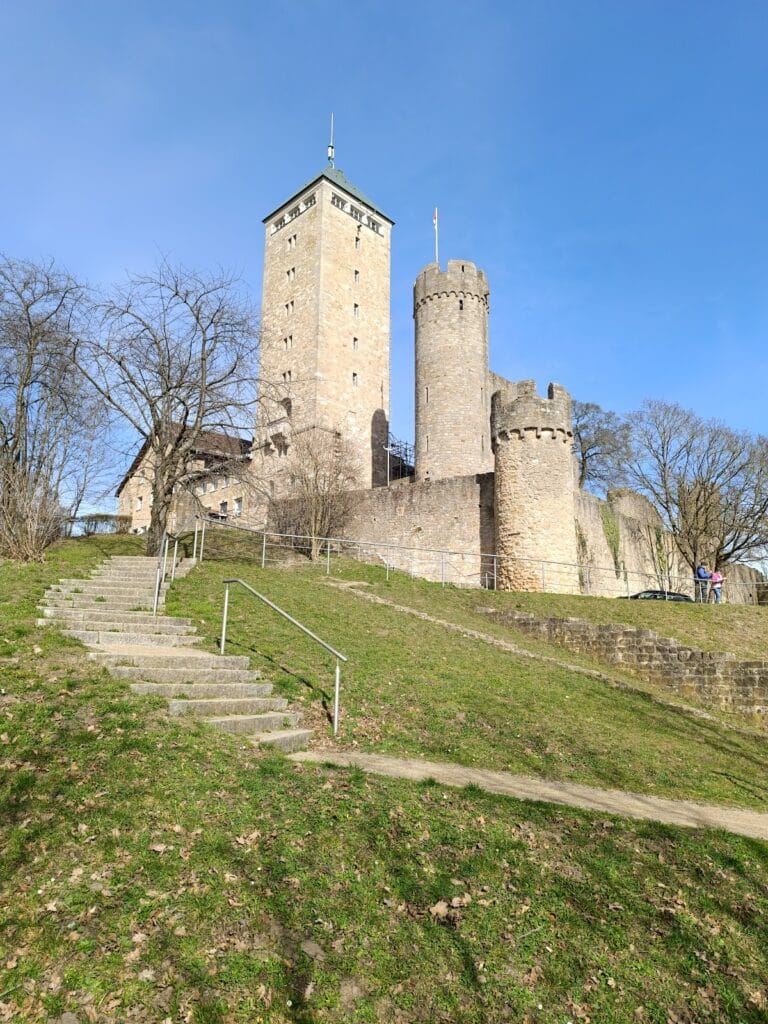Schloss Heiligenberg: A Historic Castle and Cultural Site in Seeheim-Jugenheim, Germany
Visitor Information
Google Rating: 4.5
Popularity: Low
Google Maps: View on Google Maps
Official Website: www.heiligenberg-jugenheim.de
Country: Germany
Civilization: Unclassified
Remains: Military
History
Schloss Heiligenberg is situated in the municipality of Seeheim-Jugenheim in modern-day Germany. Its origins trace back to an agricultural estate that began to take shape in the late 18th century on the hill known as Heiligenberg, overlooking the Rhine plain.
The earliest established use of the site dates to 1769 when it was primarily dedicated to farming activities. In 1811, August Konrad Hofmann acquired the estate and soon after, between 1813 and 1816, constructed a farmstead at the base of the nearby Marienberg hill. It is believed that the architect Georg Moller may have contributed to these initial design plans. By 1827, ownership changed hands to Grand Duchess Wilhelmine of Hesse. Recognizing the estate’s potential, she commissioned Moller in 1831 to transform the agricultural property into a castle, initiating a new phase that would expand its stature and function.
From 1862, the castle became the residence of Prince Alexander of Hesse and by Rhine and his wife Julia von Battenberg. Their marriage was considered morganatic, meaning it was a union between individuals of unequal social rank, which affected the status of their children. Over the next two decades, they oversaw numerous extensions and renovations guided by Moller’s architectural plans dating from 1846. Together, Alexander and Julia established the Battenberg noble family, which would later become prominent across Europe. Notably, during World War I, their English line anglicized the family name to Mountbatten.
Prior to 1914, Schloss Heiligenberg served as an important venue hosting visits from several European royals, including the Russian Tsar. The castle was also the birthplace of Princess Louise of Battenberg in 1889, who would eventually become Queen of Sweden. However, the castle’s fortunes shifted in 1920 when financial difficulties compelled Prince Ludwig Alexander (known in Britain as Louis Mountbatten) to sell the property to a group of investors.
The mid-1930s saw the castle become state property amidst the political upheavals of the era. During the Nazi period, the building was repurposed as a school for the Bund Deutscher Mädel (BDM), the League of German Girls, and also served as a hospital during the war. After World War II, Schloss Heiligenberg adapted to new roles in education. From 1946 to 1963, it housed the Pädagogisches Institut Jugenheim, a teacher training college for which Friedrich Trost was a notable director.
In more recent times, beginning in 2012, the castle has included a municipal space for civil wedding ceremonies and functions as a cultural venue. Today, the property is owned by the state of Hesse and managed by a foundation devoted to preserving art and cultural heritage, ensuring its ongoing role as a site of historical and community significance.
Remains
The architectural ensemble of Schloss Heiligenberg evolved from a simple agricultural estate into a castle complex through expansions conducted primarily between 1831 and 1886, largely under the direction of Georg Moller. The castle occupies a prominent position roughly 209 meters above sea level on Heiligenberg hill, near the Marienberg, offering expansive views over the Rhine valley.
Surrounding the castle is a park that was originally much more extensive, designed as an open landscape blending harmoniously with the northern Bergstraße region. Among its notable botanical features are several exotic trees, including a large incense cedar (Calocedrus) and a giant sequoia, both situated near a pond within the park grounds. These trees contribute to the distinctive character of the estate’s natural environment.
Close to the castle lie the ruins of a small convent dating back to the 12th century, known as Klosterruine Heiligenberg. Founded by the noble Herren von Bickenbach family, the convent remained in use until the late 15th century before falling into decline following the devastation of the Thirty Years’ War. These remains provide a medieval religious context adjacent to the more modern works of the 19th century.
One of the most visually striking features of the site is the Goldene Kreuz, or Golden Cross, an approximately 8.5-meter-tall gilded cross erected in 1866. It stands on a base made of black syenite, a durable igneous rock, and was installed to honor Grand Duchess Wilhelmine. This landmark is visible from across the Rhine plain, marking both a memorial and a point of orientation.
Nearby, the Battenberg family mausoleum was constructed in 1894 as the final resting place of Prince Alexander and Princess Julia. Over time, this mausoleum was converted into a memorial chapel and also contains a commemorative stone for their grandson Louis Mountbatten. This structure holds significant personal and historical value tied to the family’s lineage.
The castle’s interior underwent adaptations after the Second World War to meet the needs of educational institutions. Presently, the building accommodates a restaurant, seminar rooms, and facilities for civil marriage ceremonies, reflecting its ongoing community use. Moreover, Schloss Heiligenberg and its estate are situated within the Natura 2000 protected area known as “Kniebrecht, Melibocus und Orbishöhe,” underscoring the site’s combined cultural and environmental importance.










